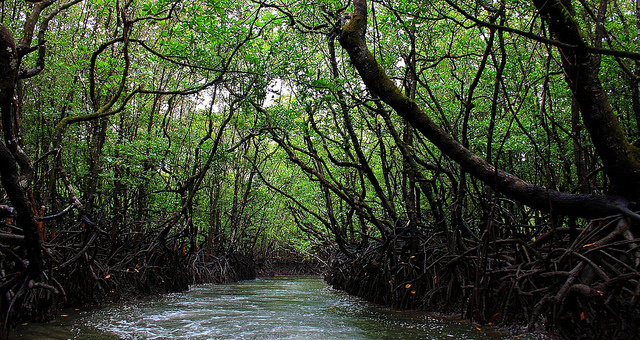
BOGOR, Indonesia—In an opinion article in Science magazine more than 45 scientists asked policymakers and environmental agencies to “get the science right when paying for nature’s services”.
As payments for ecosystem services (PES) schemes become increasingly popular, the authors argue that weak science is often the foundation of many projects, and that rigor is often lacking during evaluation periods.
Center for International Forestry Research (CIFOR) economist Sven Wunder, one of the editorial’s signatories, tells Forest News how those schemes could benefit from more evidence that is scientific.
What are payments for ecosystem services and where do they come from?
Sven Wunder: A PES is an incentive designed to produce additional environmental services through conditional payments made by the users of those services to those who produce them. Conditionality is key here: people who are paying for a service – or a land use proxy agreed for that service – can stop paying if it’s not delivered.
In some cases, it would be good to add more science to see that the service is indeed delivered
The term came from a payment for ecosystem services scheme in Costa Rica in which the government put itself in the position of services buyer because actual users were unlikely to pay for them – for example, biodiversity benefits the entire world. Under contract, they paid local people for maintaining or reestablishing forest cover, as proxies for carbon storage or biodiversity. This has been going on for more than 15 years, but other such programs already pre-existed elsewhere under other names – for example, the Conservation Reserve Program started in the US in the 1980s.
The editorial warns that there are “growing concerns over scientific weaknesses” in PES: what are those concerns?
There are two types of monitoring for those projects: checking whether the provider is compliant (e.g., whether a piece of forest is conserved or not), and whether at a larger scale the service (carbon storage, biodiversity conservation, etc.) is actually there as a result. In some cases, it would be good to add more science to see that the service is indeed delivered.
The authors have designed guidelines to make PES schemes more evidence-based and reviewed existing projects, indicating that 60 percent of projects lack at least one key ingredient of “scientific integrity”. How can this affect their outcomes?
Projects conducted on a large scale – such as South Africa’s attempt to eradicate exotic trees that suck water from its watersheds – should include four critical design elements. A baseline – that is, a starting point from which to measure how those trees’ population is evolving. Monitoring, to verify that those trees are eradicated and water services improved as a result. A recognition that ecosystems are dynamic – so, what happens if those trees come back? What are the consequences to biodiversity as habitats change? Finally, external factors such as climate change can be game changers for PES and must be taken into account. Projects on a smaller scale, however, may not have enough money to cover everything.
Don’t just assume that environmental services are provided, but look for evidence that they actually are
Yet doesn’t the editorial claim that the guidelines were “designed so that they are not onerous to address”?
You always have options and shortcuts you can use if you don’t have the resources. For example, if you’re trying to measure how a carbon-focused REDD+ project also contributes to biodiversity, you may not be able to look at all available indicators, but you can study how it affects bird diversity as a proxy.
Are the guidelines now fixed or could they be improved in the future?
The PES model is being consolidated. We’re well advanced on the design principles, but there is not enough hard science to evaluate what works and what doesn’t. The value of this article is to take the reader through a framework of what is needed to be thought about when working on PES and how to raise the bar. Don’t just assume that environmental services are provided, but look for evidence that they actually are.
We want you to share Forests News content, which is licensed under Creative Commons Attribution-NonCommercial-ShareAlike 4.0 International (CC BY-NC-SA 4.0). This means you are free to redistribute our material for non-commercial purposes. All we ask is that you give Forests News appropriate credit and link to the original Forests News content, indicate if changes were made, and distribute your contributions under the same Creative Commons license. You must notify Forests News if you repost, reprint or reuse our materials by contacting forestsnews@cifor-icraf.org.
